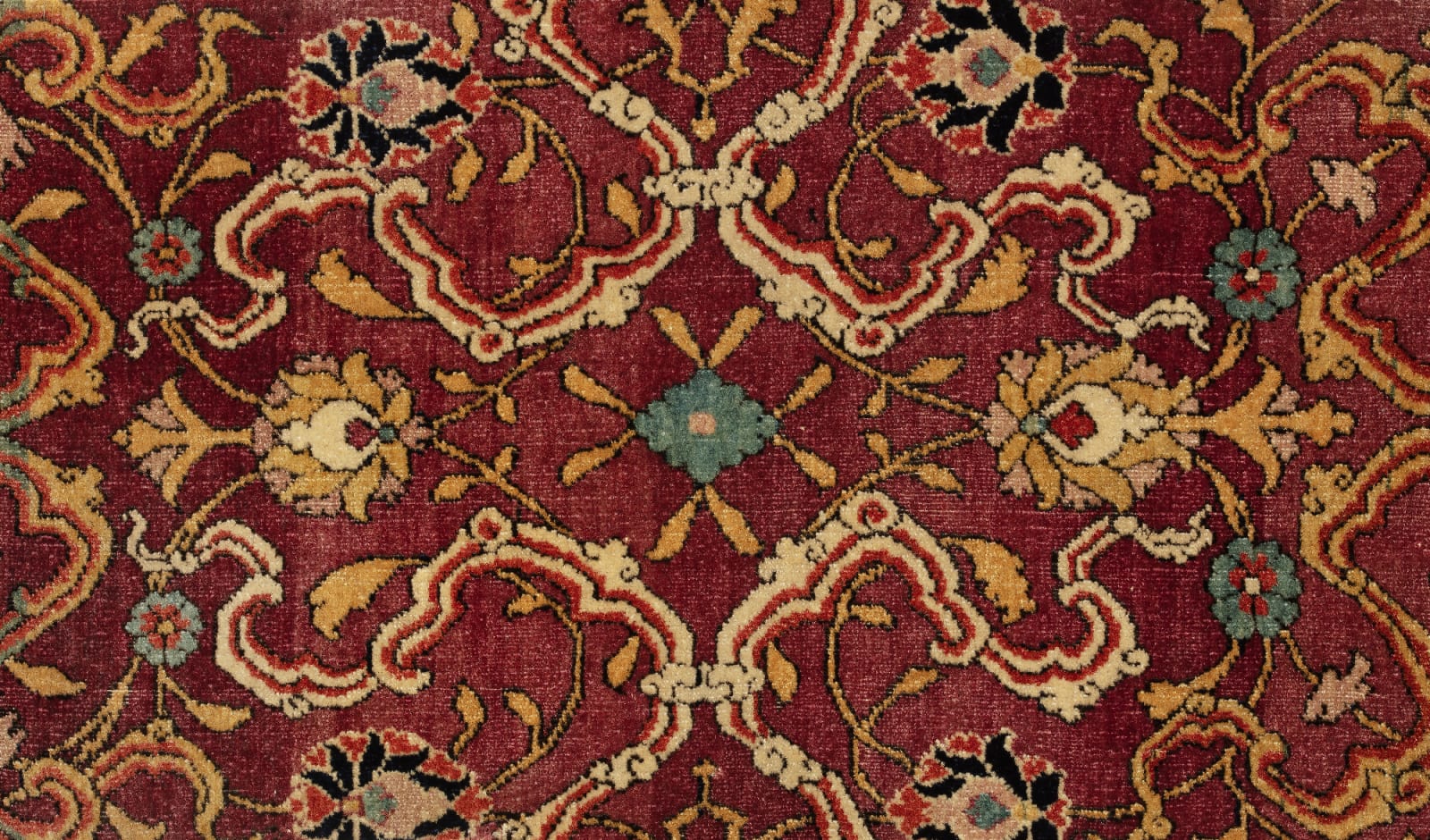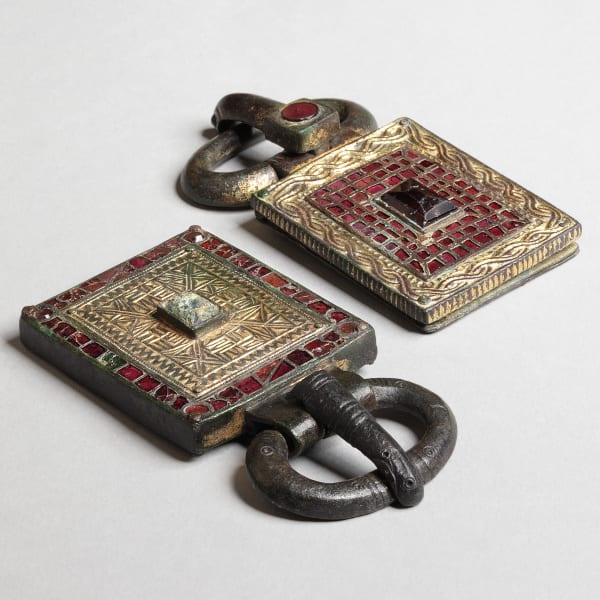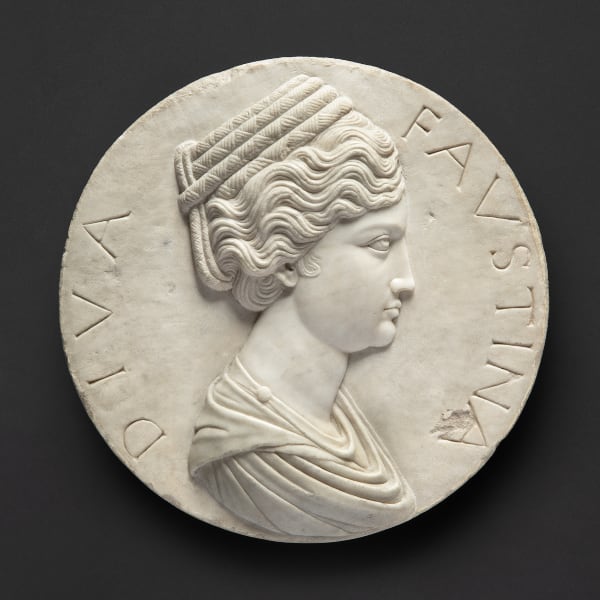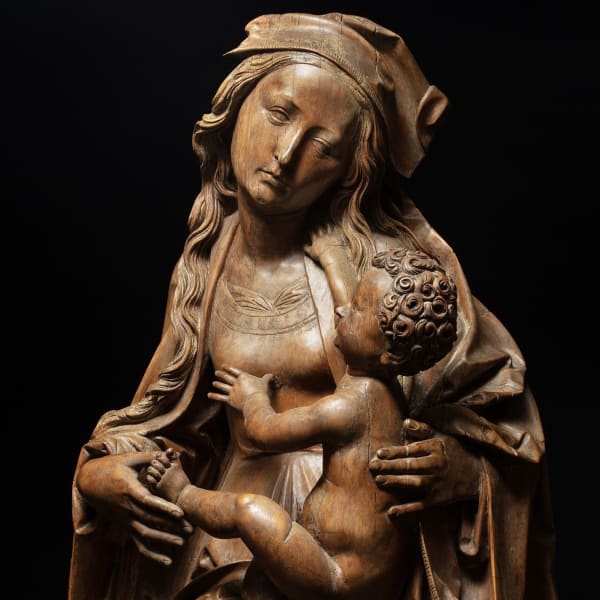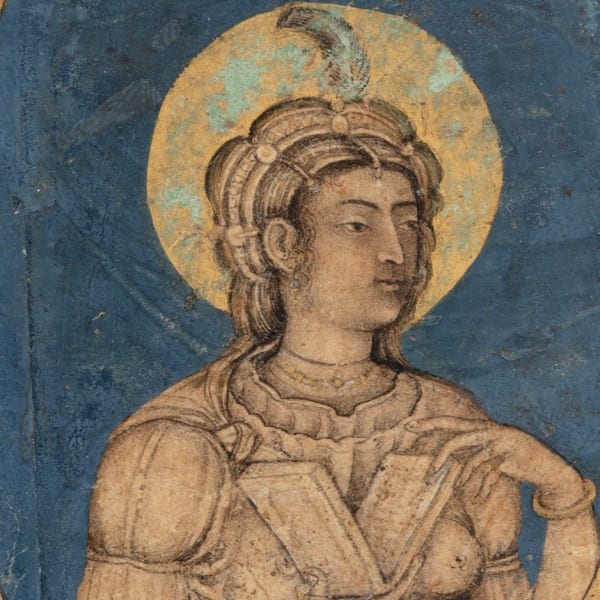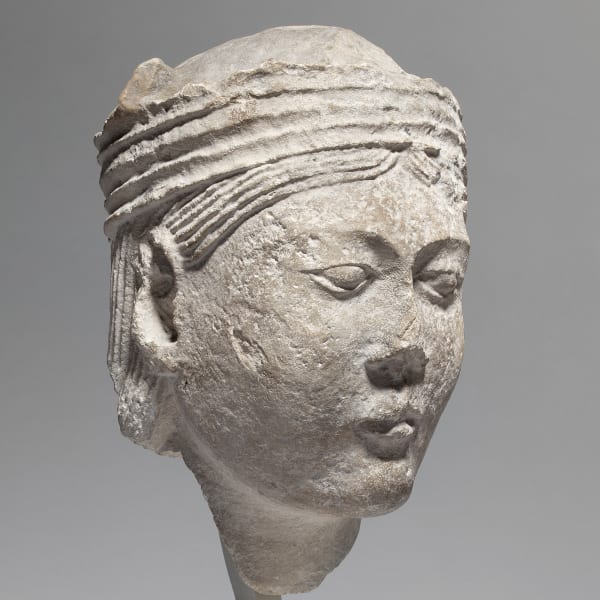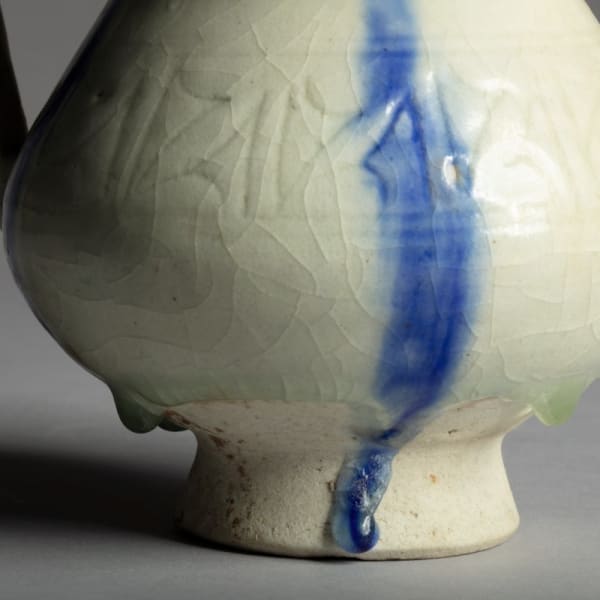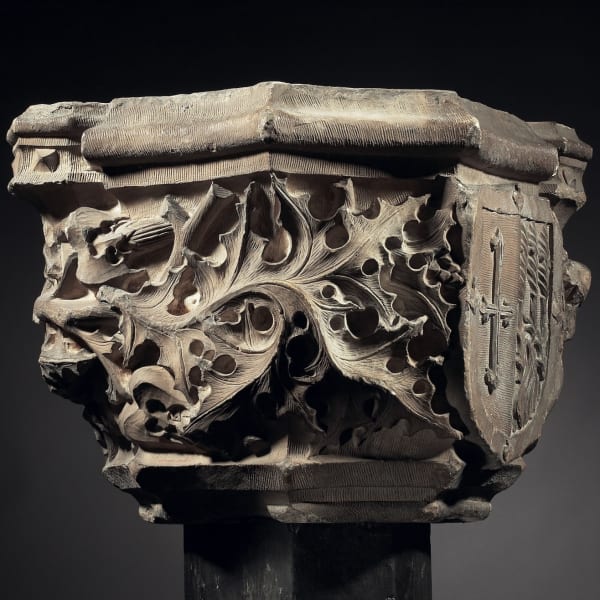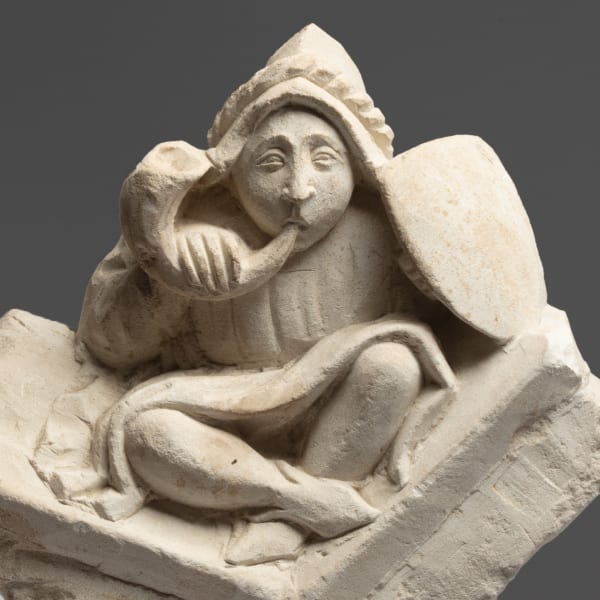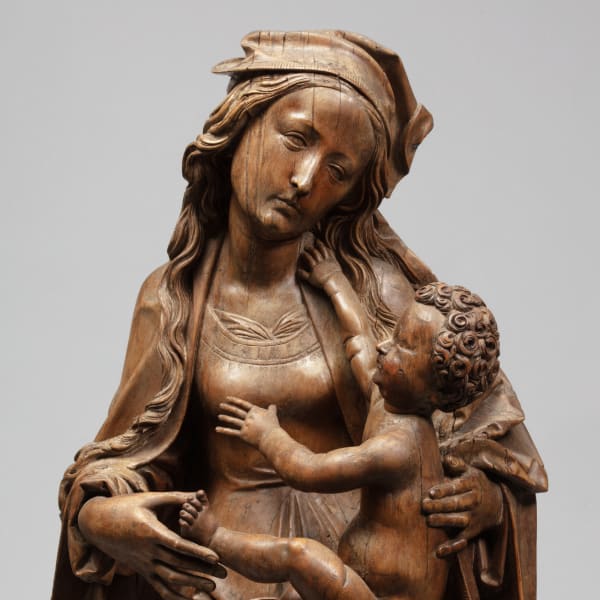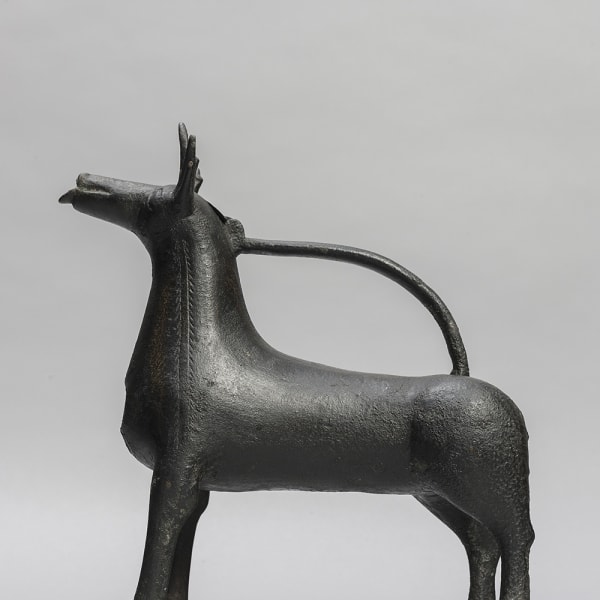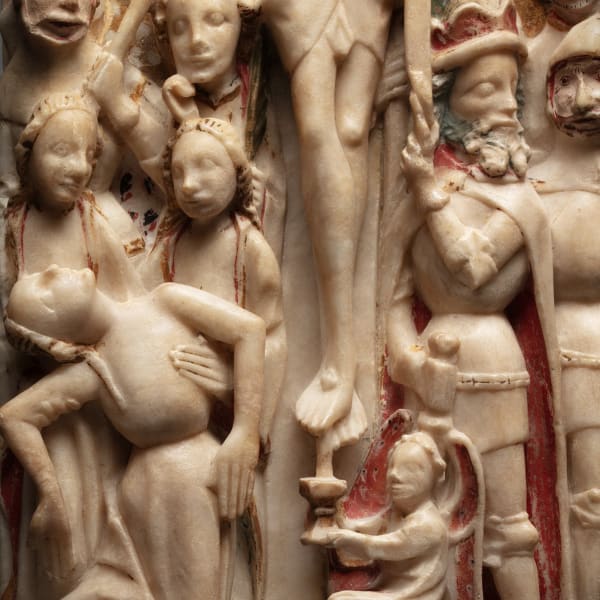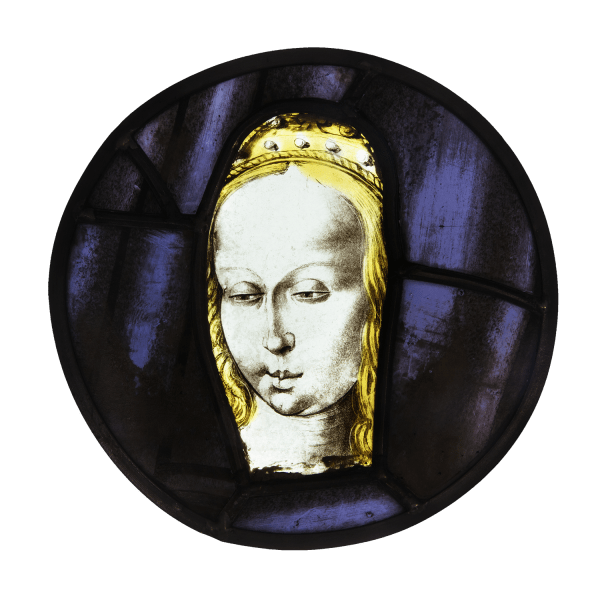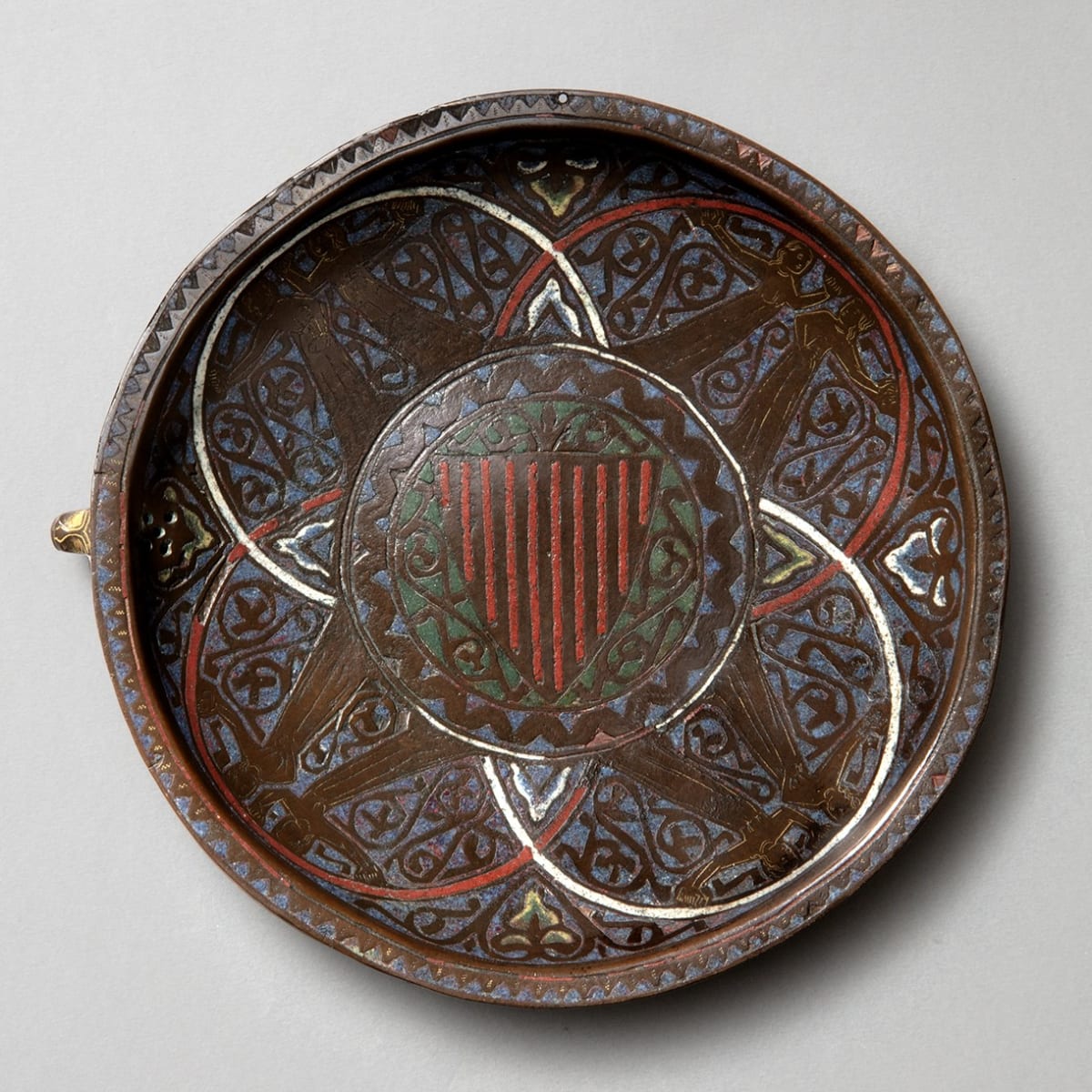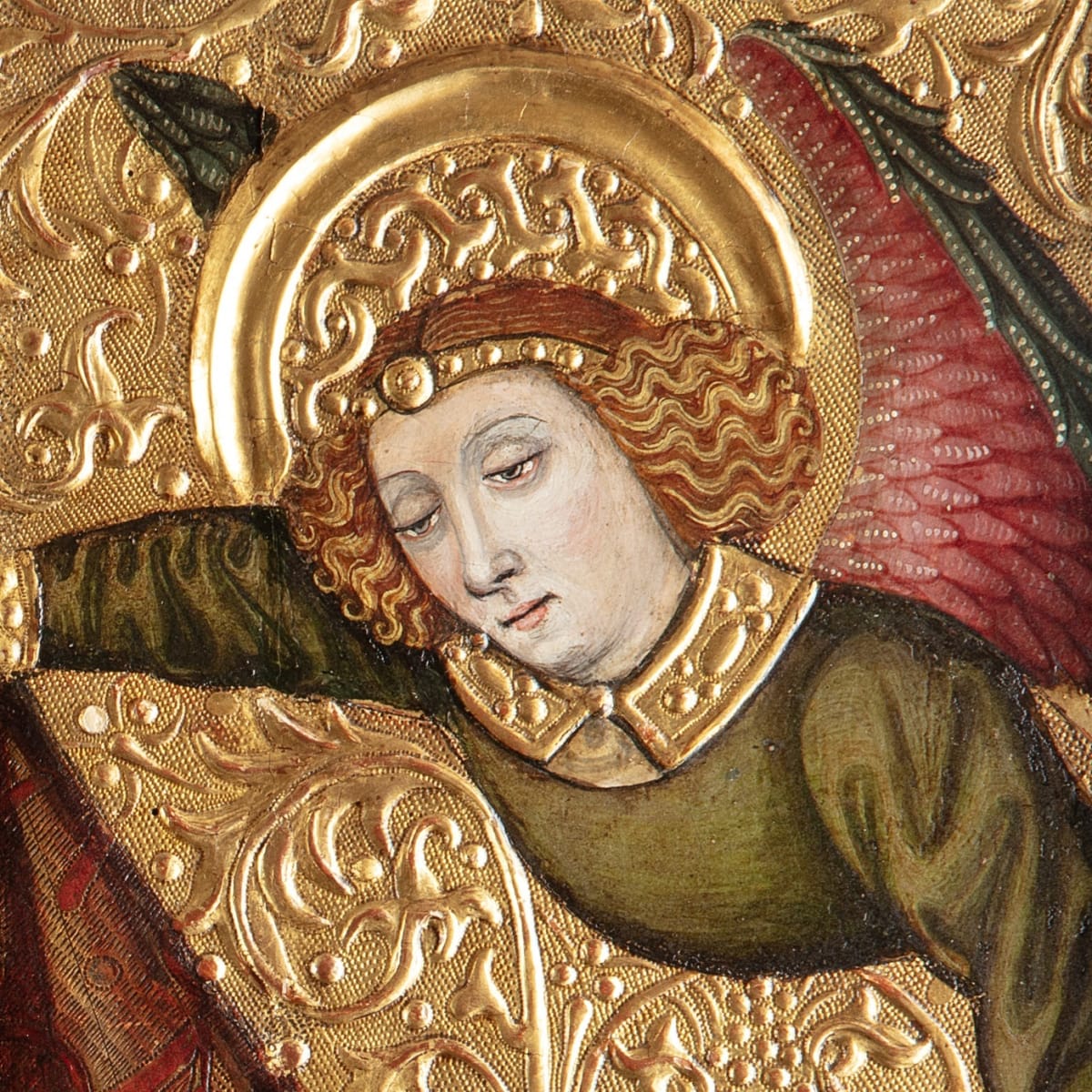

The pair of dated and inscribed Ardabil carpets were probably commissioned by Shah Tahmasp in 1539–1540 for the shrine of his ancestor Shaikh Safi al-Din (1252–1334), the founder of the Safavid dynasty, in Ardabil in northwest Persia. Our fragment, which constitutes a border cartouche, features elegantly drawn interlacing arabesques, cloud bands and naturalistic lotus motifs against a rich and densely woven red ground, probably was once part of the carpets missing its borders in the Los Angeles Museum of Art, although we cannot be certain of this as the complete Ardabil medallion carpet in the Victoria & Albert Museum, London has numerous insertions.
In 1892, William Morris saw the Ardabil Carpet, pictured at right and now held in the Victoria and Albert Museum, in a special two-week exhibition at the Wigmore Street Gallery. The museum acquire it the following year. It has since been discovered that there were two Ardabil carpets; and that portions of a second were acquired by J. Paul Getty and given in 1953 to the Los Angeles County Museum of Art. Both of the nearly four-hundred-year-old carpets had arrived in London in dilapidated condition, and the version in the Victoria and Albert Museum was restored to its current state using portions of the second carpet.


To enable the presentation of a single ‘complete’ carpet rather than two damaged ones, some of the pieces of the Los Angeles carpet, pictured at left, had been used to repair its London twin. It was largely through these restoration efforts that the LACMA carpet was reduced in length and lost its main border. Our cartouche is one of the pieces separated from the original carpets as a result of these interventions.

Video Highlight: Our fragment of the Ardabil Carpet

Detail: The Ardabil Carpet in the Victoria and Albert Museum, London
In addition to the technical feat of setting up looms and completing a carpet of this size, the variety and richness of the colours within its coherent and seamless design make the Ardabil as superlative example. The carpet must have been completed under the auspices of a master weaver of the Safavid court workshops.
The excellence of the carpet is further exemplified by the inclusion of remarkably bright dye pigments mostly made from local plants, such as madder orange, pale blue, and a vivid, pulsating green, in addition to rich indigo blue and magenta dyes from India. Small remaining fragments of the ivory-hued border can be seen around the edges of the cartouche. The virtuoso sophistication of the Ardabil Carpet reflects the highest quality of weaving produced during the reign of Shah Tahmasp.
